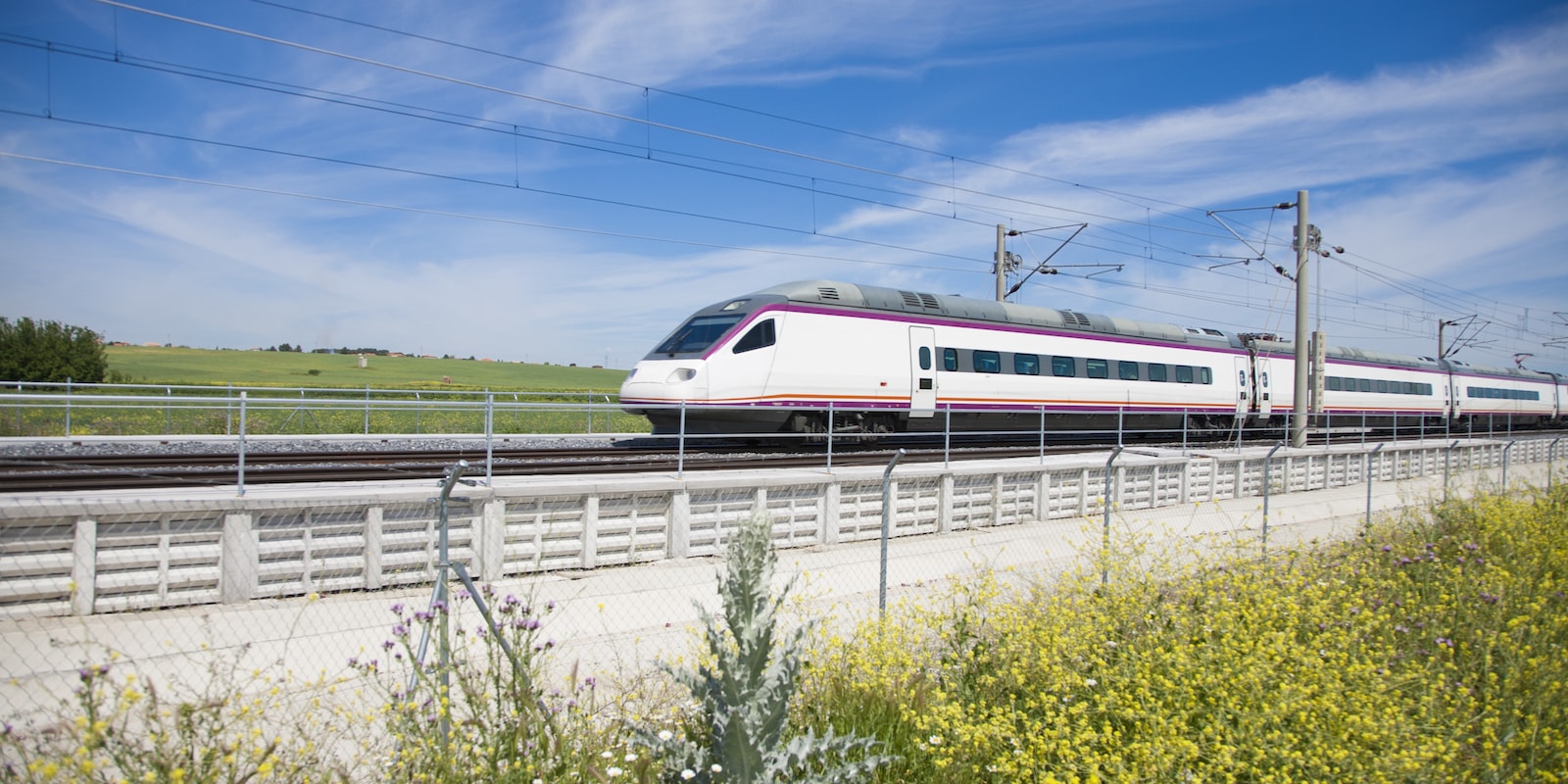Tuesday, February 4, 2025
Our country is one of the world leaders in high-speed rail, but how did it achieve this? What role do renewable energies play in this sector? What challenges does our network still face?
Only two decades separate the first train journey in history from the launch of the railway in our country. Considering that this mode of transportation was invented — at least as we know it today — in the 19th century, it can be said that Spain has been linked to its development almost from the very beginning. Specifically, the Barcelona-Mataró line was the first to operate back in 1848, and, since then, numerous milestones have made us one of the leading international powers in this field.
In terms of total kilometers of track, the world's largest and most populous countries — the United States, China, Russia, Canada, and India — dominate the top rankings. However, the situation changes when looking at the deployment of high-speed rail. In this type of rail, Spain ranks second only to the Asian giant, with more than 4,500 kilometers (including the existing infrastructure, which currently totals 3,973.7 kilometers, and the projected network), according to data from Adif and the International Union of Railways. For reference, the United States has fewer than 1,300 kilometers of high-speed rail, and Russia doesn't even appear in the top 15 positions.
The first trip on the AVE — acronym for Spanish High-Speed Rail — took place more than 30 years ago, in that legendary year of 1992, when the cities of Madrid and Seville were connected for the Expo. Many other routes have been added to this one, forming the current national network. All this experience and know-how has also turned us into an exporter of technology. A good example of this is the Desert Train, where an international public-private consortium, led by the Spanish companies ADIF and Renfe Operadora, was responsible for launching the Haramain High-Speed Railway, which connects Mecca and Medina, both located in Saudi Arabia.
But the train doesn’t just transport passengers. When it comes to freight transportation, rail accounts for approximately 17% of internal freight transportation in the EU, according to Eurostat, while road transportation represents over 77%. At the EU level, the Union as a whole has set a goal to increase rail freight transportation by 50% by 2030 and double that figure by 2050 in order to contribute to decarbonization. Why? This is because only 0.4% of greenhouse gas emissions and 1.9% of energy consumption in EU transportation come from this mode of transportation.
Hydrogen, biofuels... clean technology in transportation
In light of these objectives, one might wonder if all trains use more sustainable technology for their journeys. Unfortunately, the answer is no, although there are already initiatives to advance in this area that go beyond electrification.
One of the first examples of a railway powered by sustainable, non-electric energy took place in November 2023, when an alliance between Moeve, Maersk, and Renfe successfully completed the first test in Spain of renewable fuels in rail transportation. For 15 weeks, the locomotives used over 130 tons of HVO (renewable diesel) to complete 100 trips between Algeciras and Córdoba, one of the non-electrified sections of the national network. This initiative made it possible to sustainably transport more than 4,700 containers and prevent the emission of nearly 500 tons of CO2. According to the companies involved in the test, the results were satisfactory, demonstrating optimal engine performance.
The key to this test lies in the second-generation biofuel used, produced by Moeve at their La Rábida Energy Park (Huelva) from used cooking oils, which can reduce carbon dioxide emissions by up to 90% compared to traditional fuels throughout its life cycle. The energy company specifies that "this type of fuel promotes the circular economy by utilizing waste that would otherwise end up in landfills."
Another example of renewable propulsion came one year later. In this case, the main protagonist is hydrogen, as Adif has confirmed that the FCH2RAIL project has enabled the operation of the first hydrogen train on the Spanish and Portuguese rail networks. For four years, a consortium led by CAF, DLR, Toyota, Renfe, Adif, CNH2, IP, and Stemmann-Technik developed a bimodal train with hydrogen fuel cells, capable of operating on both electrified and non-electrified lines. With a budget of 14 million euros, 70% of which was funded by European funds, the project has demonstrated the feasibility of this alternative technology to diesel.
These and other alliances reveal the power that the railroad still holds today as a symbol of progress worldwide, including in our country. This mode of transportation is moving toward a future where sustainability and innovation will drive change, solidifying Spain's position as a leader in high-speed rail and establishing us as advocates for sustainability. The locomotive is already in motion, driven by initiatives such as the use of renewable biofuels and advancements in hydrogen, projects and trials that demonstrate the railway's environmental commitment.
¿Te ha parecido interesante?





